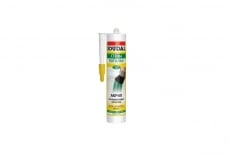



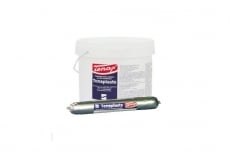

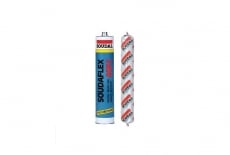

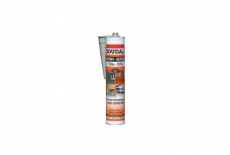

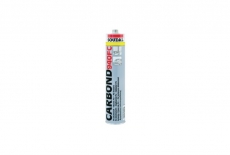

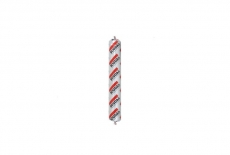

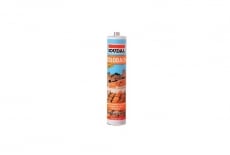

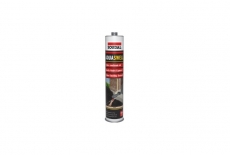

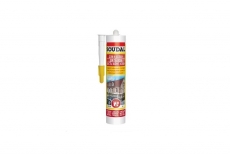

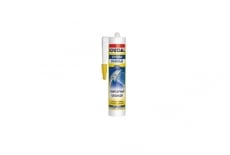

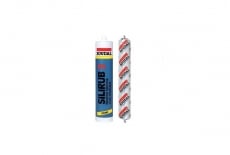

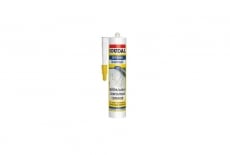

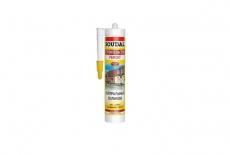

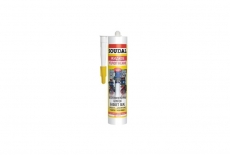

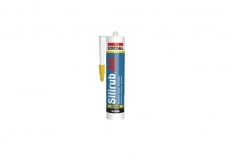

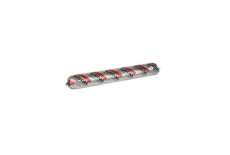


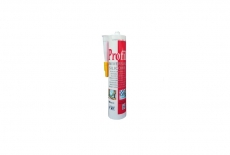

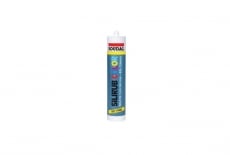

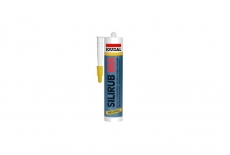

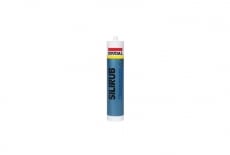



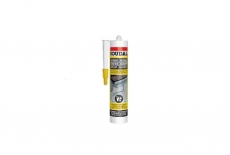

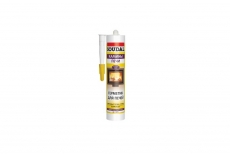

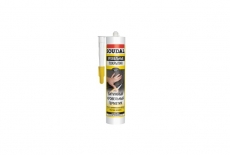



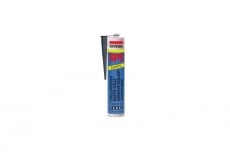

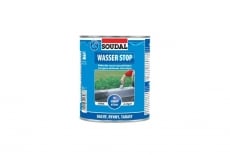

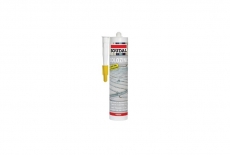

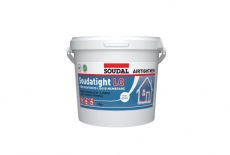

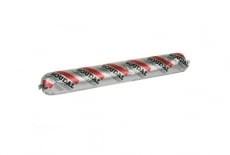
































































These means used for sealing seams, joints, cracks and crevices in building structures. They create a waterproof barrier and reduce heat loss. In technical systems, these tools prevent the penetration of air, dust, and moisture and provide a balance of deformations between different materials.
Before application, the surface should be cleaned of dust and moisture. The depth of the seam must comply with the standards. Apply in an even layer, use a seam cord to control thickness. After application, smooth the surface with a tool or water to ensure contact with both sides of the seam. It is important to wait for complete drying, which guarantees the strength and elasticity of the connection.
The assortment includes acrylic, polyurethane, silicone, as well as agents adapted to specific conditions — for seams with increased load, chemical resistance or fire resistance.
Acrylic sealants suitable for interior work and easily painted. Polyurethane are characterized by high resistance to mechanical influences and temperature fluctuations. Silicone resistant to water, ultraviolet and aggressive environments. Special formulas are adapted for use in contact with oil, hot air or sea water.
|
Type of sealant |
Foundation |
Scope of application |
Temperature range |
Advantages |
Disadvantages |
|
Silicone |
Silicon |
Bathrooms, glass, aluminum, kitchen |
–50 °C to +150 °C |
Water resistance, elasticity, durability |
Not paintable, weak adhesion to concrete |
|
Acrylic |
Acrylic dispersion |
Internal seams, windows, doors |
–20 °C to +80 °C |
Can be painted, easy to apply |
Not resistant to moisture, less elastic |
|
Polyurethane |
Polyurethane |
Facades, concrete, metal, roofs |
–40 °C to +120 °C |
Strong adhesion, elasticity, mechanical strength |
It dries longer, a specific smell |
|
Hybrid |
Siloxane + polyurethane |
Universal (external and internal works) |
–40 °C to +100 °C |
High adhesion to all surfaces, paintable |
More expensive than other types |
|
Bituminous |
Bitumen + polymers |
Roof, basements, waterproofing |
–10 °C to +80 °C |
Ideal for wet conditions, anti-corrosion |
Not elastic, not dyeable, pungent smell |
Choose the tool according to the type of surface, operating conditions and expected load. Strong polyurethane models are suitable for cargo joints. At high humidity, choose silicone. If coloring is required - acrylic. Always consider the operating temperature range — from minus to plus 70°C and more. Before buying, consult with an expert and then you will be able to choose and buy sealants correctly. Determine the conditions of use: internal or external environment, temperature, humidity. Choose based on compatibility with the surface, desired elasticity, etc time drying out. For professional installation, consider the packaging of the product — a cartridge or cartouche with a nozzle.
1️⃣ Convenient fastening solution: the largest range of all types of fastening in Ukraine.
2️⃣ Savings with each order: the more purchases, the better the price for the product.
3️⃣ Bonuses for online purchases: an additional discount of 2% on all products when ordering through the site.
4️⃣ Fast delivery and individual orders are possible.
5️⃣ Professional support: a team of experts is ready to help you choose the necessary hardware quickly and efficiently.
Therefore, it is worth buying foams, glues, sealants right here and get even more benefits from DINMARK!
Polyurethane for facades and silicone for wet rooms are considered the best. For painted surfaces, you should buy acrylic products.
To choose the right tool, first determine the operating conditions — the type of surface, humidity, temperature loads, and the presence of expansion joints. For each task - installation of facades, plumbing sealing or sealing of seams - certain types of products are suitable: silicone, polyurethane, acrylic or hybrid.
In 2025, multifunctional polyurethane sealants with high elasticity are recommended. New formulas with improved adhesion and frost resistance are available in the Dinmark catalog.
Enter your email address to follow the Dinmark news